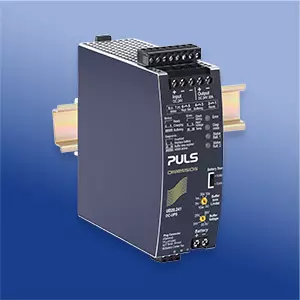News & Events
UPS Design - AC or DC?
As industrial control professionals, we invest a lot in our control systems. Between the design, installation, programming, maintenance, and actual cost of the hardware and software, a lot of time and dollars are spent. On the back side, when the system is down, it costs a lot in downtime, troubleshooting and repairs. What do we do to protect this investment? One of the largest disruptions and costs to a production facility is poor quality power or disruption of power.
It is crucial to specify and use an uninterruptable power supply (UPS). This can be one of the highest returns on investment in the plant as it protects the load (electrical devices receiving power).
In normal circumstances, the UPS supplies power to the supported loads and maintains its battery levels. When power input is lost to the UPS, it switches to battery power to continue providing power to the loads for the amount of time it is designed to do so. It can also alert the facility of the loss of power, and can alert again when the battery is running low on power. This can allow for a planned shut down of equipment.
In a poor power quality scenario, the UPS is designed to protect the load by absorbing the power spike, dip, or surge, and not allowing it to get to the load.
There are many choices when it comes to UPS. One choice in an industrial setting is whether to use an AC or DC UPS. The UPS that protects AC power is typically designed for a more environmentally controlled atmosphere such as an office or data center. These rooms are maintained at a temperature and cleanliness that is suitable for computers, servers and other equipment that is known to be less tolerant of higher temperatures, dust, vibration, etc. The AC UPS protects 120VAC or higher So the challenge with using an AC UPS on the factory floor is twofold. First, the UPS itself must be placed in a room that is environmentally controlled with the output being wired, sometimes long distances, to the loads. And second, the 120VAC output power must be then converted to DC since many of the parts of the control system use DC power. Usually a power supply that has an AC input and DV output is used. This is an expensive item and other potential point of failure.
Another option is the DC UPS. These UPS units are designed to be in the harsher environments on the factory floor. They have more industrial mounting systems and can be clipped onto DIN rail or otherwise mounted in the panel. And they supply DC voltage so the control system devices can be wired directly to the UPS.
The choice of UPS isn’t necessarily right or wrong and depend on the factors in the facility. Either using an AC or DC UPS, design with the dynamics that best suit the application.

